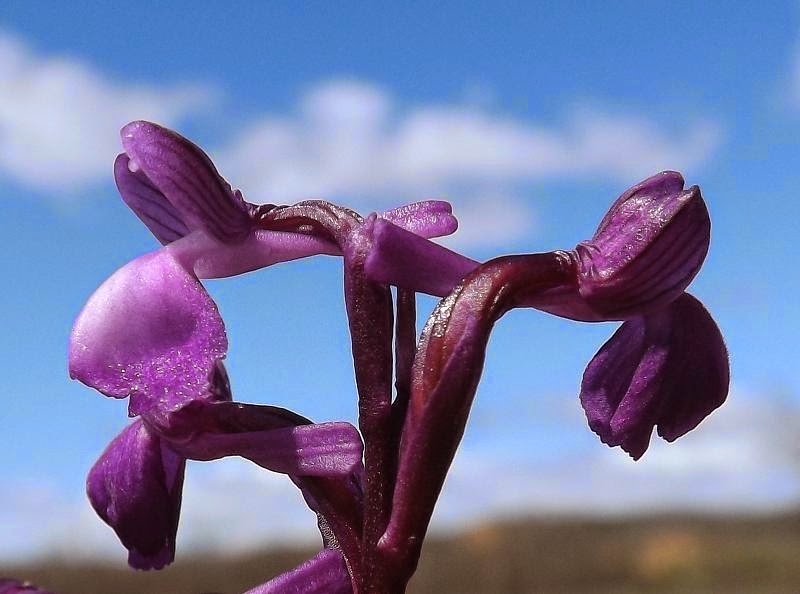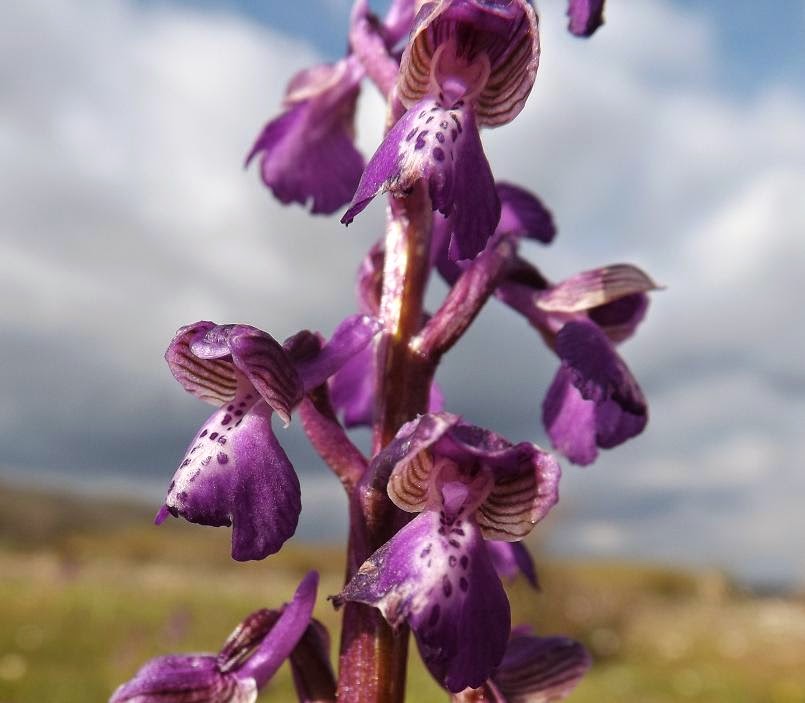DEZE POST IN HET NEDERLANDS: KLIK HIER.
 Walking in the Cantabrian Mountains: Fuentes de Peñacorada.
Walking in the Cantabrian Mountains: Fuentes de Peñacorada.
General introduction.
This post will give a description of an easy and beautiful marked route near the southern border of the Central Cantabrian Mountains. The importance of the route lies both within the spectacular landscape and the cultural heritance.
This route is called "La Huella de las Legiones", which means literally "The footprint of the Legions". The designers of the route are completely convinced that we are dealing with a Roman way, which was constructed during the Cantabrian Wars (29-19 BC) to reach the local Celtic settlements called "castros".
Those "castros" were invariably built in inaccessible places, very difficult to conquer. The general idea is that the Romans built some main ways following the mayor river valleys and many smaller sideways which led from a main way towards the Celtic settlements in the mountains. In this case, our route is interpreted as a sideway of the main way along the river Esla (generally recognised as a Roman way), which led to a castro situated at the Campurrial pass.
According to the historians Eutimio Martino and Siro Sanz, this way has all the same characteristics of some closeby and widely recognised Roman ways in other parts of the Cantabrian Mountains. Considering the fact that the region has been under roman control for more than 400 years, since the Cantabrian Wars till the beginning of the 5th century when the Suevi, the Vandals and the Alans entered Spain, it is not far fetched to imaging that they also constructed a network of roads in the Cantabrian Mountains. Because those ways were the "natural" connection between the villages, they have been maintained and repaired in the centuries since, which means that they are only partially original (in the meaning that not all the slabs of stone were literally laid down by the Romans). In medieval writings of before the year 1000 this way is already mentioned, which at least proves a minimum age of more than a millenium.
Other cultural aspects are the ruins of a medieval castle, "el castillo de Monteagudo" on top of a steep mountain and traces of a Celtic settlement.
READ FURTHER AND ENJOY THE PHOTOS

























